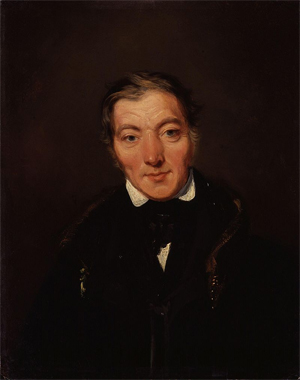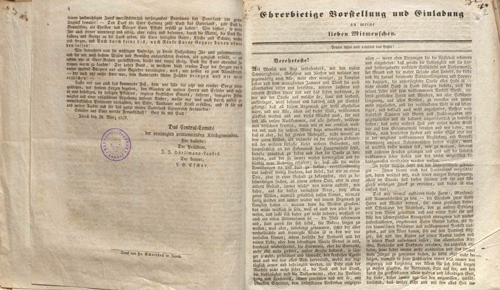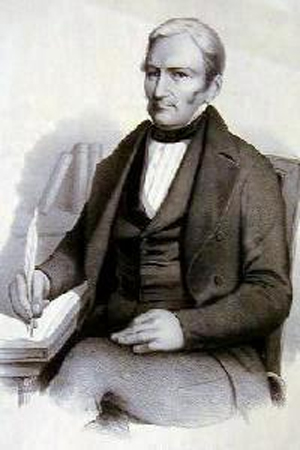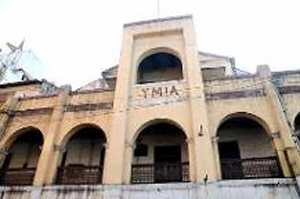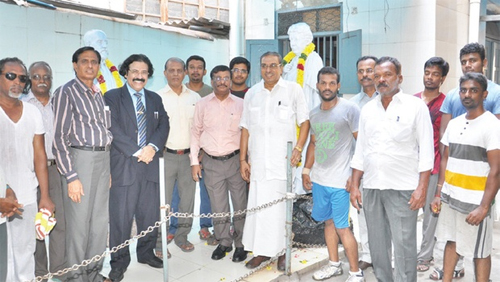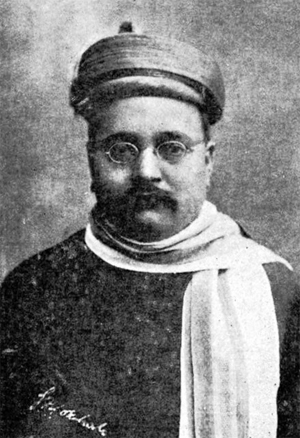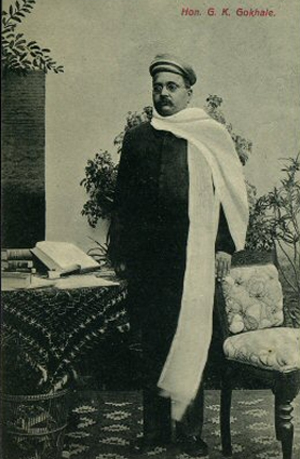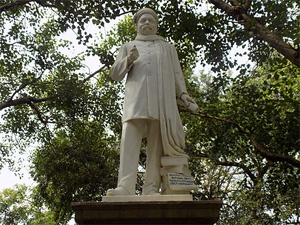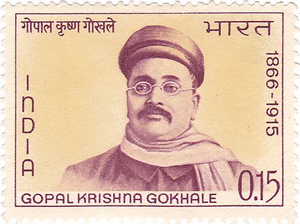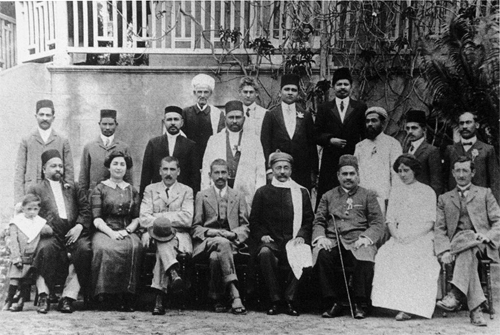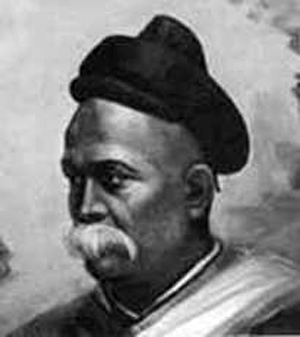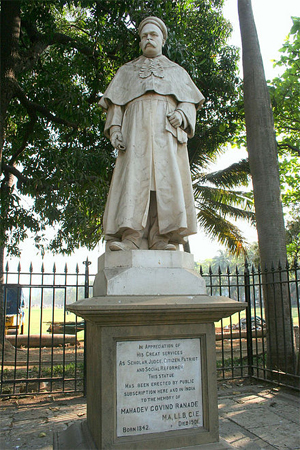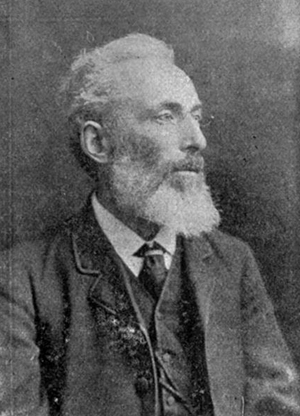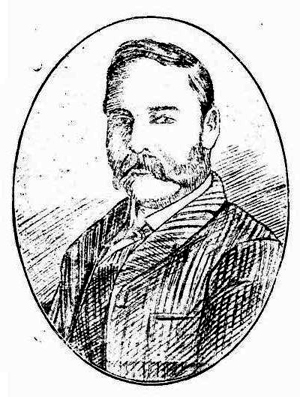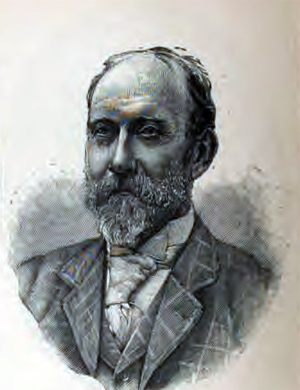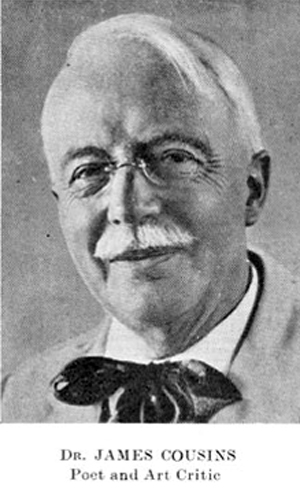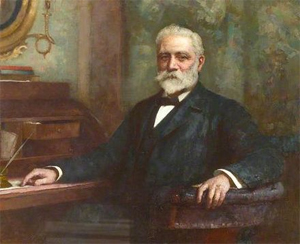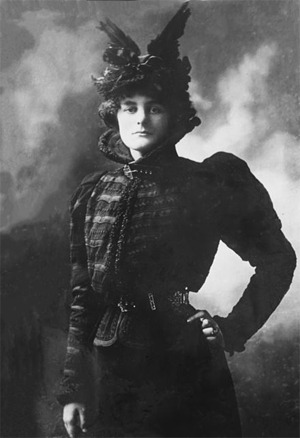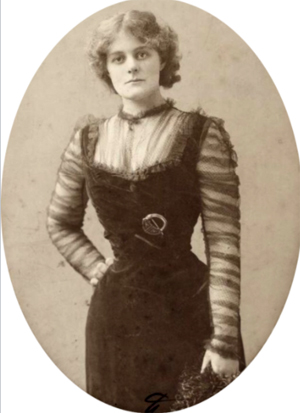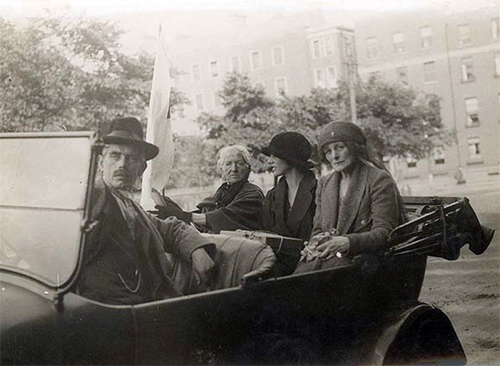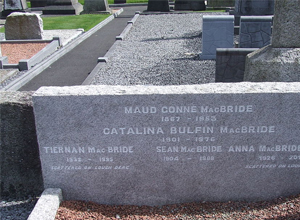by Wikipedia
Accessed: 8/26/20
Anquetil-Duperron starts out by insisting that theology is "a science like philosophy" but must, unlike philosophy, stay within the limits circumscribed by "a genuine revelation, the mysteries of religion, and several dogmas transmitted to us by apostolic tradition," which form the bedrock that no one is allowed to question...the proper realm of theology is that of revelation... a theologian must be almost universal" and argues that, faced with many pretended revelations, a theologian must be equipped to judge their claims. This indicates the need for knowledge of several languages in order to read the original texts; of history to understand their context; of geography to understand their setting; and of poetry to appreciate their style. "All such knowledge thus forms part of theology" (p. 373v). Furthermore, a real theologian should know not only the Old and New Testaments and all related languages but everything ever divinely revealed and transmitted...
his search for genuine ancient records of God's earliest revelations was to carry him far beyond the Middle East and become a drawn-out quest for the Indian Vedas that lasted from his youth to his death in 1805. His last publication -- a posthumously published annotated translation of Father Paulinus a Sancto Bartholomaeo's Viaggio alle Indie orientali (Voyage to the East Indies, 1796) that appeared in 1808 -- shows the end point of Anquetil-Duperron's theological journey of a lifetime. Taking issue with Paulinus's statement that the Ezour-vedam was "composed by a missionary and falsely attributed to the brahmins" and that the Indians' conception of Brahma, Vishnu, and Shiva clearly shows "the materialism of the Indians" and their pagan philosophy (Paulinus a Sancto Bartholomaeo 1796:66), Anquetil-Duperron vigorously defended the Ezour-vedam's genuineness ("a donkey can deny more than a philosopher can prove"3) as well as the orthodoxy of the Indian trinity...
How did Anquetil-Duperron come to regard the Ezour-vedam as genuine; and why could he, an ardent Christian, call Vedic texts "orthodox"?...
For people in search of the world's oldest books, India's mysterious Vedas had a particular attraction, even though -- or perhaps because -- information about them often consisted of little more than the names of its four parts and the assertion of great antiquity. Agostinho de Azevedo's report about the Vedas and Shastras of India found its way into Johannes Lucena's Historia da Vida do Padre Francisco de Xavier (1600) and Diogo do Couto's Decada Quinta da Asia (1612), and from there into other works including Holwell's (see Chapter 6)...However, both Fenicio's and Azevedo's data were based not on the Vedas but on other texts....
Johann Joachim MULLER'S (1661-1733) (in)famous De tribus impostoribus contained a passage about them. The false date of 1598 on the original printed edition of these Three Impostors led some researchers6 to conclude that this book contained the earliest Western mention of the four Vedas; but Winfried Schroder has proved that the book is by Muller and was written almost a century later, in 1688 (Muller 1999; Mulsow 2002:119). Muller had been involved in oriental studies, and his Veda passage shows beautifully how competition by alternative revelations and older texts could be used to destabilize Christianity, whether in jest -- as seems to have been his intention -- or in earnest, as his readers understood it. Muller's passage about the Vedas occurs in the context of an attack on Christianity on the basis of competing revelations that form the basis of the sacred scriptures of the "three impostors" Moses, Jesus, and Mohammed.
-- Chapter 7. Anquetil-Duperron's Search for the True Vedas, by Urs App
-- The Birth of Orientalism, by Urs App
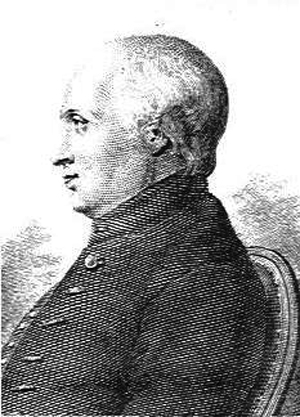
Abraham Hyacinthe
Anquetil-Duperron
Born: 7 December 1731, Paris, France
Died: 17 January 1805 (aged 73)
Occupation: Orientalist
Abraham Hyacinthe Anquetil-Duperron (7 December 1731 – 17 January 1805) was the first[1] professional French Indologist. He conceived the institutional framework for the new profession. He inspired the founding of the École française d'Extrême-Orient a century after his death. The library of the Institut français de Pondichéry is named after him.
Early life
Abraham Hyacinthe Anquetil was born in Paris on 7 December 1731[2] as the fourth of seven children of Pierre Anquetil, a spice importer.[3] As was the custom of the time, the name of one of his father's estates, 'Duperron', was added to his name to distinguish him from his brothers.[3] Anquetil-Duperron initially distinguished himself in the study of theology at Paris[2] and Utrecht with the intention of becoming a priest like his elder brother Louis-Pierre Anquetil.[4] In the course of his studies, however, he acquired such an interest in Latin, Hebrew, and Greek that he chose to devote himself entirely to philology [study of language] and classical studies and discontinued his clerical training.[2] He travelled to Amersfoort near Utrecht to study oriental languages, especially Arabic, with the Jansenites who were exiled there.[3]
Jansenism was a theological movement within Catholicism, primarily active in France, that emphasized original sin, human depravity, the necessity of divine grace and predestination. The movement originated from the posthumously published work of the Dutch theologian Cornelius Jansen, who died in 1638. It was first popularized by Jansen's friend Abbot Jean du Vergier de Hauranne, of Saint-Cyran-en-Brenne Abbey, and, after du Vergier's death in 1643, was led by Antoine Arnauld. Through the 17th and into the 18th centuries, Jansenism was a distinct movement away from the Catholic Church. The theological centre of the movement was the convent of Port-Royal-des-Champs Abbey, which was a haven for writers including du Vergier, Arnauld, Pierre Nicole, Blaise Pascal and Jean Racine.
Jansenism was opposed by many in the Catholic hierarchy, especially the Jesuits. Although the Jansenists identified themselves only as rigorous followers of Augustine of Hippo's teachings, Jesuits coined the term Jansenism to identify them as having Calvinist affinities. The apostolic constitution, Cum occasione promulgated by Pope Innocent X in 1653, condemned five cardinal doctrines of Jansenism as heresy—especially the relationship between human free will and efficacious grace, wherein the teachings of Augustine, as presented by the Jansenists, contradicted the teachings of the Jesuit School. Jansenist leaders endeavored to accommodate the pope's pronouncements while retaining their uniqueness, and enjoyed a measure of peace in the late 17th century under Pope Clement IX. However, further controversy led to the apostolic constitution Unigenitus Dei Filius, promulgated by Pope Clement XI in 1713.
-- Jansenism, by Wikipedia
On returning to Paris, his attendance at the Royal Library (Bibliothèque du Roi, now the National Library) attracted the attention of the keeper of the manuscripts, Abbé Sallier, who hired Anquetil-Duperron as an assistant on a small salary.[2]
Early interest in Indian manuscripts
In 1754, Michelangelo-André Le Roux Deshauterayes who at the time was professor for Arabic at the Collège Royal, showed Anquetil a facsimile of four leaves of a Vendidad Sade[n 1] that had been sent to Deshauterayes's uncle Michel Fourmont in the 1730s in the hope that someone might be able to decipher it. The original was at Oxford's Bodleian Library, but the script was not recognized, and so the manuscript was placed in a box chained to a wall near the library's entrance and shown to everyone who might be able to identify the curiosity.[5] Also at the Bodelian was the manuscript collection of James Fraser (1713–1754), who had lived in Surat (present-day Gujarat, India) for over sixteen years, where he had been a Factor of the British East India Company and later Member of Council. Fraser had returned to Britain with some 200 Sanskrit and Avestan manuscripts, which he intended to translate, but he died prematurely on 21 January 1754.
FRASER, JAMES (1713–1754), author and collector of oriental manuscripts, born in 1713, was the son of Alexander Fraser (d. 1733) of Reelick, near Inverness. He paid two visits to India, where he resided at Surat. During his first stay (1730-40) he acquired a working knowledge of Zend from Parsi teachers and of Sanskrit from a learned Brahman. He also collected materials for an account of Nadir Shah, who invaded India in 1737-8. Coming home for about two years, he published his book. He then went out again as a factor in the East India Company's service, and became a member of the council at Surat, where he remained for six years. After his return in 1749 he expressed the intention of compiling an ancient Persian (Zend) lexicon, and of translating the Zendavesta from the original. He also spoke of translating the 'Vedh' (Veda) of the Brahmans; he seems, however, to have had no direct knowledge of the Vedas, but to have been acquainted with post-Vedic works only. Nothing came of these plans owing to his premature death, which took place at his own house, Easter Moniack, Inverness-shire, on 21 Jan. 1754 (Scots Mag. 1754, p. 51).
Fraser married in London, in 1742, Mary, only daughter of Edward Satchwell of Warwickshire, by whom he had issue one son and three daughters. A portrait of him is still in the possession of his descendants at Reelick House. James Baillie Fraser [q. v.] and William Fraser (1784?-1835) [q. v.] were his grandsons.
Fraser's book is entitled 'The History of Nadir Shah, formerly called Thamas Kuli Khan, the present Emperor of Persia; to which is prefixed a short History of the Moghol Emperors' (London, 1742). It contains a map of the Moghul empire and part of Tartary. It was the first book in English treating of Nadir Shah, 'the scourge of God.' It is important not only as a first-hand contribution to the history of contemporary events, but also for the number of original documents which it alone has preserved.
At the end of his book the author gives a list of about two hundred oriental manuscripts, including Zend and Sanskrit, which he had purchased at Surat, Cambay, and Ahmedabad. His claim that his 'Sanskerrit' manuscripts formed 'the first collection of that kind ever brought into Europe' appears to be valid, though single Sanskrit manuscripts had reached England and France even earlier. After his death his oriental manuscripts were bought from his widow for the Radclifte Library at Oxford; they were transferred to the Bodleian on 10 May 1872. One of Fraser's manuscripts, containing 178 portraits of Indian kings down to Aurengzebe, found its way directly into the Bodleian as early as 1737, in which year it was presented to the library by the poet Alexander Pope, its then possessor. Fraser's Sanskrit manuscripts, forty-one in number and all post-Vedic, were the earliest collection in that language which came into the possession of Oxford University: the first Sanskrit manuscript, however, which the Bodleian acquired was given to it in 1666 by John Ken, an East India merchant of London. It was in order to inspect Fraser's Zend manuscripts that the famous French orientalist, Anquetil Duperron, visited Oxford in 1702, when brought a prisoner of war to England.
-- Preface and appendix to Fraser's History of Nadir Shah; manuscript notes, written about 1754 by S. Smalbroke (son of Dr. Richard Smalbroke [q. v.], bishop of Lichfield and Coventry) in a copy of that work now in the possession of W. Irvine, esq.; Note on James Fraser in the Journal of the Royal Asiatic Society, 1899, pp. 214-20, by W. Irvine; Burke's Landed Gentry; Macray's Annals of the Bodleian Library, Oxford, 1890, pp. 216, 372, note 1; Aufrecht's Bodleian Sanskrit Catalogue, pp. 358, 403-4.
In his later travelogue, Anquetil is sharply critical of the English, both of Fraser's "failure"[5] to accomplish what he intended, and of the Bodelian's failure to realize that Thomas Hyde's manuscripts, which the Bodelian also had in its possession, included a transliteration table for Avestan script.[5] Playing on the French antipathy towards the English, in his travelogue he later claimed that after seeing the facsimile pages of the Oxford manuscript, he resolved to "enrich [his] country with that singular work" and the translation of it.apud [6] There was a government interest in obtaining eastern manuscripts;[n 2] Anquetil-Duperron obtained a mission from the government to do so but, unable to afford his own passage to India, he enlisted as a common soldier for the French East India Company on 2[3] or 7[2] November 1754. He marched with the company of recruits from the Parisian prisons to the Atlantic port of L'Orient, where an expedition was preparing to depart.[3] His friends secured his discharge and, on 7 February 1755, the minister, touched by his romantic zeal for knowledge, granted him free passage, a seat at the captain's table, an allowance of 500 livres from the library, and a letter of introduction to the French governor in India which would entitle him to a small salary while there.[2] Anquetil-Duperron left France as a free passenger on 24 February 1755.
First travels
After a passage of six months, Anquetil-Duperron landed on 10 August 1755 at the French colony at Pondicherry, on the coast in south-eastern India.[4] From his private correspondence it appears that he intended to become "master of the religious institutions of all Asia", which in the 18th-century were still imagined to all derive from the Indian Vedas.[6] For that, Anquetil-Duperron knew he would need to learn Sanskrit.[6] He initially studied Persian[2] (the lingua franca of Moghul India), which Europeans in the 18th century still presumed to have descended from Sanskrit. His plan was then to visit the Brahmins in Benares to learn Sanskrit "at some famous pagoda."apud [6] Half a year later, he was living on rice and vegetables and saving his money so that he might "find some Brahmin" to become the disciple of. As he also wanted to "study the Indian books", he decided to travel to the French colony at Chandannagar also known in French as Chandernagor in Bengal, where he arrived in April 1756.[6] He promptly fell sick; by coincidence, he landed in the hospital of the Jesuit missionary Antoine Mozac, who some years earlier had copied the "Pondicherry Vedas".[6] Anquetil-Duperron remained in the hospital until September or October 1756 and began to wonder whether he should not instead become a priest as he had intended years earlier.[6] Meanwhile, the outbreak of the Seven Years' War in Europe had renewed hostilities between French and British forces in India, where the conflict is known as the Third Carnatic War. The British East India Companyunder Robert Clive and the British Navy under Charles Watson bombarded and captured Chandannagar on 23 March 1757 and Anquetil-Duperron resolved to leave the territory.[2] Unable to gain access to the Vedas, Anquetil-Duperron planned to travel to Tibet and China to find the ancient Indian texts there.[6] Discouraged by news that there were no texts to be found there, Anquetil-Duperron returned overland to Pondicherry over the course of a hundred-day trek.[2] There, he found his brother Etienne Anquetil de Briancourt, who had been named consul at Surat.[3][6]
As Etienne assured Abraham that the Zoroastrian priests of Surat would teach him their sacred texts as well as the languages in which they were written,[7] he resolved to accompany his brother. Wanting to explore the country, however, he disembarked from his brother's ship at Mahé and travelled overland the rest of the way on foot[2] and on horseback.[3] He arrived in Surat on 1 March 1758, at a time when the Indian Zoroastrians (Parsis) were embroiled in a bitter dispute over intercalation, what is now called the "Kabiseh controversy".[7] Each side cultivated ties with competing European traders. The one faction (the shahenshahis, led by a certain Muncherji Seth) had ties to the Dutch East India Company. The other (the kadmis, led by a certain Darab Kumana) maintained ties to the British and Armenians. In the travelogue, Darab's co-operation with Anquetil-Duperron is attributed to a need for assurance of French protection.[7] It seems that Darab (and another priest, a certain Kaus) attempted to provide Anquetil-Duperron with an education similar to that given to priests.[7] His essay Exposition du Systeme Theologique aligns itself with the texts and provides only glimpses of what the Parsis actually believed at the time.[7] Anquetil complains of the priests' interest with law and ritual rather than philosophy or abstract ideas.[7] Anquetil grew impatient with the methodical methods of the priests and with his inability to obtain manuscripts. According to his travelogue, the priests also had no desire to teach him Avestan and no expectations that he would master it well enough to translate their texts.[7] Also according to Anquetil, the priests were committing a great sacrilege in acquainting him with the texts and lessons were conducted in Persian so that the priest's Zoroastrian servant would not be aware of what was transpiring.[7] Kaus's anxiety increased when Anquetil demanded proper interpretation and not just translation.[7] Via Persian, the two priests taught him what they knew of Avestan (which was not much)[3] and of Zoroastrian theology (which was even less).[7] In June 1759, 16 months after his arrival in Surat, he sent news to Paris that he had completed (in three months) a translation of the "Vendidad".[3][n 3] The same June, the priest Darab arranged for Anquetil-Duperron to attend—in disguise but armed with a sword and pistol—a ceremony in a fire temple "in exchange for a small present and the hope of promenading the city in my palanquin".apud [7] Anquetil also suggests that Darab attempted to convert him, but that he "courageously refused to waver".apud [7] Two centuries later, J. J. Modi would explain Anquetil's invitation into a temple as only possible if the sacred fire had been temporarily removed because the temple was being renovated.cf. [3] On the other hand, Anquetil states that he was given a sudra and kusti and he may have been formally invested with them, which would have made him a Zoroastrian in the priest's view, and thus would have been acceptable in a functioning temple.[7]
Duel and legal problems
In late 1759, Anquetil-Duperron killed a fellow countryman in a duel, was badly wounded himself, and was forced to take refuge with the British. Anquetil's own brother demanded that he be handed over, but the British refused. In April 1760, the French authorities dropped the charges and allowed him to return to the French sector. In the meantime, Anquetil had travelled all over Gujarat. At Surat and in his travels, he collected 180 manuscripts, which not only included almost all known Avestan language texts and many of the 9th/10th-century works of Zoroastrian tradition, but also other texts in a multitude of Indian languages.[3] Anquetil-Duperron finished his translation in September 1760, and decided to leave Surat. From Surat, he intended again to travel to Benares[2][6] but the widow of the Frenchman he had killed was bringing charges against him, which Anquetil then used as an excuse to seek refuge again with the British and obtain passage on one of the English ships destined for Europe. He paid for his journey by calling in debts that others had made to his brother.[7] Just before his departure, the priest Kaus lodged a complaint with the British that Anquetil had failed to pay for all the manuscripts that he had purchased. The British seized his goods, but released them when Anquetil's brother guaranteed payment.[7] Anquetil-Duperron left Surat on 15 March 1761. He arrived at Portsmouth eight months later, where was interned but allowed to continue working.[3] After his release, he traveled to Oxford to check his copies of the Avestan language texts against those of the Bodelian. He then set out for France and arrived in Paris on 14 March 1762. He deposited his manuscripts in the Royal Library the next day.[3][6]
Report and fame
In June 1762, his report was published in the Journal des Scavans, and Anquetil-Duperron became an instant celebrity.[6] The title of his report indicated that he had gone to India to "discover and translate the works attributed to Zoroaster."[6] It appears that this mischaracterization of his objective was in order to be seen as having achieved what he intended.[6] The librarian Jean-Jacques Barthélemy procured a pension for him and appointed him interpreter of oriental languages at the Royal Library.[2] In 1763, he was elected an associate of the Academy of Inscriptions and began to arrange for the publication of the materials he had collected during his travels.[2] In 1771, he published his three-part Zend Avesta of works ascribed to Zoroaster, which included not only a re-translation of what the priests had translated into Persian for him but also a travelogue (Journal du voyage de l’Auteur aux Indes orientates), a summary of the manuscripts that he collected (Notice des manuscrits), a biography of Zoroaster (Vie de Zoroastre), a translation of the Bundahishn, and two essays (Exposition des usages civils etreligieux des Parses and Système cérémonial et moral des livres zends et pehlvis).
Controversy
A heated dispute broke out at once, in which Duperron was accused of perpetrating (or having been duped in) an elaborate fraud. At the fore in this dispute was William Jones, at the time still a student at Oxford. The future founder of the Royal Asiatic Society and future discoverer of the Indo-European language group was deeply wounded by Duperron's scornful treatment of Jones's countrymen and, in a pamphlet written in French, Jones dismissed Duperron's manuscripts as the rhapsody of some mindless Hindu. For the contemporaries of Voltaire, the silly tales of gods and demons and outlandish laws and rules seemed impossible to relate to the idealized Enlightenment-era view of Zoroaster or to a religion which they associated with simplicity and wisdom.[8] Other scholars attacked Duperron on philological grounds. Duperron was vindicated by Rasmus Rask in 1820, 15 years after Duperron's death. The debate would rage for another 30 years after that. Anquetil's "attempt at a translation was, of course, premature",[3] and, as Eugène Burnouf demonstrated sixty years later, translating the Avesta via a previous translation was prone to errors. However, Anquetil was the first to bring an ancient oriental sacred text other than the Bible to the attention of European scholars.[3]
Later years
Following his Zend-Avesta and until his death in 1805, Anquetil was occupied with studying the laws, history, and geography of India.[3] He was greatly affected by the Revolution.[2] "In his youth a kind of Don Juan, he now led the life of a poor, ascetic bachelor, combining Christian virtue with the wisdom of a Brahmin."[3] During that period he abandoned society, and lived in voluntary poverty on a few pence a day. In 1778, he published at Amsterdam his Legislation orientale, in which he endeavored to prove that the nature of oriental despotism had been greatly misrepresented by Montesquieu and others.[2] His Recherches historiques et géographiques sur l'Inde appeared in 1786 and formed part of Thieffenthaler's Geography of India.[2] In 1798, he published L'Inde en rapport avec l'Europe (Hamburg, 2 vols.), a work considered notable by the British for its "remarkable" invectives against them and for its "numerous misrepresentations".[2] His most valuable achievement[3] was a two-volume Latin retranslation and commentary of a Persian translation of fifty Upanishads received from India in 1775, which Anquetil had translated by 1796. Called the "Oupnek'hat or Upanischada" by Anquetil, these were subsequently published in Strasbourg in 1801-1802 and represent the first European language translation of a Hindu text, albeit in an approximate rendering.[3] Anquetil's commentaries make up half the work. A 108-page French paraphrase of Anquetil's Oupnek'hats by Jean-Denis Lanjuinais appeared in Millin's Magasin Encyclopédique of 1805. Arthur Schopenhauer encountered Anquetil's Oupnek'hats in the spring of 1814 and repeatedly called it not only his favorite book but the work of the entire world literature that is most worthy of being read.[n 4] In India, Anquetil's Oupnek'hats precipitated a revival in the study of the Upanishads.[3]
Political and institutional activity
When the Institut de France was reorganized, Anquetil was voted in as a member but soon resigned. In 1804, Anquetil refused to swear allegiance to Napoleon, stating that "his obeisance [was] to the laws of the government under which he lived and which protected him."apud [3]
Death
Abraham Hyacinthe Anquetil-Duperron died in Paris on 17 January 1805.[2] His work became one of the most important references for nineteenth century spiritualists and occultists in France.
Notes
1. A Vendidad Sade is a particular variant of a Yasna text into which sections of the Visperad and Vendidad are interleaved. A Vendidad Sade contains only Avestan text, without exegetical commentary. The pages that Anquetil-Duperron were shown were a copy of part of a manuscript that had been purchased in Surat, India by George Boucher in 1719 and brought to England by Richard Cobbe in 1723. Cobbe presented it to Oxford's Bodleian Library, where it became known by the misnomer 'Oxford Vendidad'.
2. Fifty years earlier, J. F. Pétis de la Croix had been ordered to bring back manuscripts from Iran, but had not been successful.[3]
3. Anquetil referred here to the Vendidad Sade (see note above) from which he had previously seen a copy of four leaves and not to the Vendidad proper.
4. See the book-length study of the Oupnek'hat’s influence on the genesis of Schopenhauer's philosophy by App[9]
References
1. T. K. John, "Research and Studies by Western Missionaries and Scholars in Sanskrit Language and Literature," in the St. Thomas Christian Encyclopaedia of India, Vol. III, Ollur[Trichur] 2010 Ed. George Menachery, pp.79 - 83
2. "Abraham Hyacinthe Anquetil du Perron" , Encyclopædia Britannica, 9th ed., Vol. II, New York: Charles Scribner's Sons, 1878, pp. 90–91.
3. Duchesne-Guillemin, Jaques (1985), "Abraham Hyacinthe Anquetil-Duperron", Encyclopedia Iranica, vol. II, Cosa Mesa: Mazda, pp. 100–101.
4. Chisholm, Hugh, ed. (1911). "Anquetil Duperron, Abraham Hyacinthe" . Encyclopædia Britannica. 2 (11th ed.). Cambridge University Press. pp. 80–81.
5. Deloche, Jean; Filliozat, Manonmani; Filliozat, Pierre-Sylvain, eds. (1997), Voyage en Inde, 1754-1762: Anquetil-Duperron: Relation de voyage en preliminaire a la traduction du Zend-Avesta, Collection Peregrinations asiatiques, Paris: École française d'Extrême-Orient / Maisonneuve & Larose / Royer, pp. 15–32, ISBN 2-7068-1278-8.
6. App, Urs (2010), "Anquetil-Duperron's Search for the True Vedas", The Birth of Orientalism, Philadelphia: UP Press, pp. 363–439, ISBN 978-0-8122-4261-4.
7. Stiles Manek, Susan (1997), The Death of Ahriman, Bombay: K.R. Cama Oriental Institute, pp. 134–142.
8. Darmesteter, James (1880), Introduction. Zend-Avesta, part I: Vendidad (SBE, vol. IV), Oxford: Clarendon, pp. I.xiv-I.xii.
9. App, Urs (2014), Schopenhauer's Compass. An Introduction to Schopenhauer's Philosophy and its Origins, Wil: UniversityMedia, ISBN 978-3-906000-03-9.
• Stuurman, Siep (2007), "Cosmopolitan Egalitarianism in the Enlightenment: Anquetil Duperron on India and America", Journal of the History of Ideas, 68: 255–278.
• Abbattista, Guido (1993), Anquetil-Duperron, Considérations philosophiques, historiques et géographiques sur les deux mondes, edizione critica con Introduzione e annotazione di Guido Abbattista, Pisa: Edizioni della Scuola Normale Superiore, 1993.
External links
• Works by or about Abraham Hyacinthe Anquetil-Duperron in libraries (WorldCat catalog)
• Anquetil-Duperron, Abraham Hyacinthe (1771), Zend-Avesta, (3 vols.), Paris: N. M. Tilliard, at the Internet Archive.
• "Anquetil Duperron, Abraham Hyacinthe" . New International Encyclopedia. 1905.
• Filliozat, Pierre-Sylvain (2005). "Anquetil Duperron, un pionnier du voyage scientifique en Inde". Comptes rendus des séances de l'Académie des Inscriptions et Belles-Lettres. 149 (4): 1261–1280.

